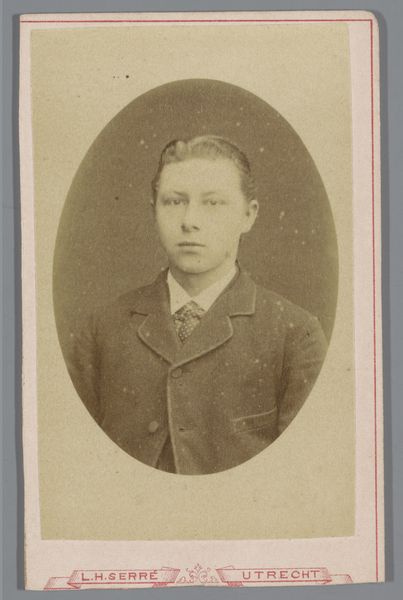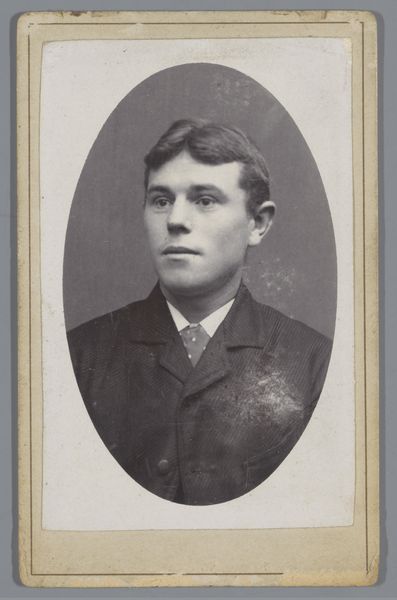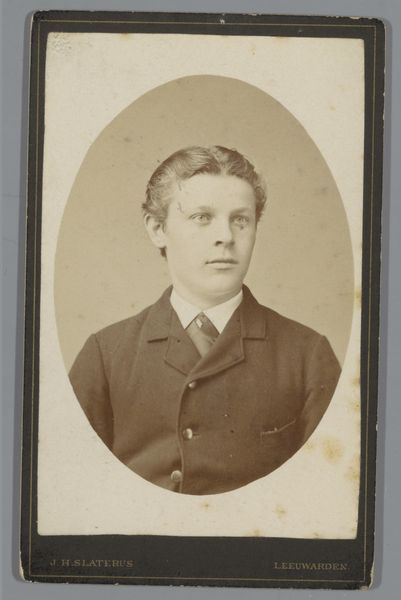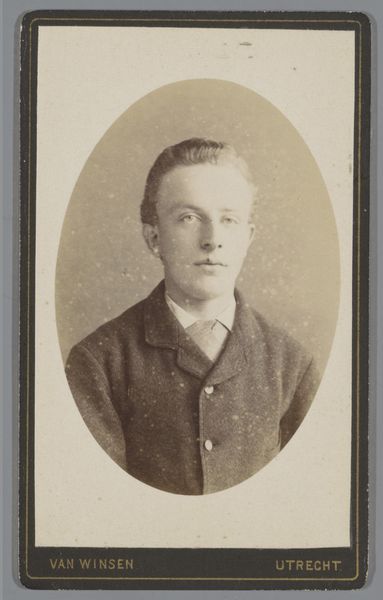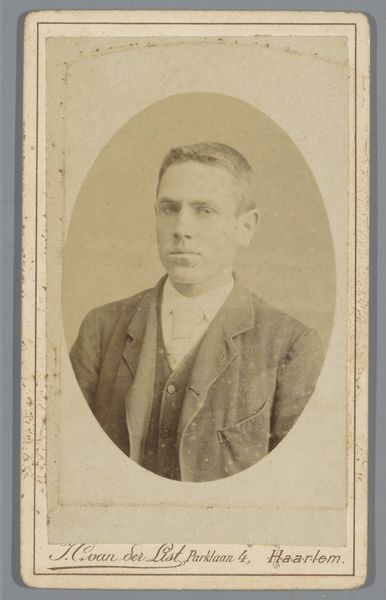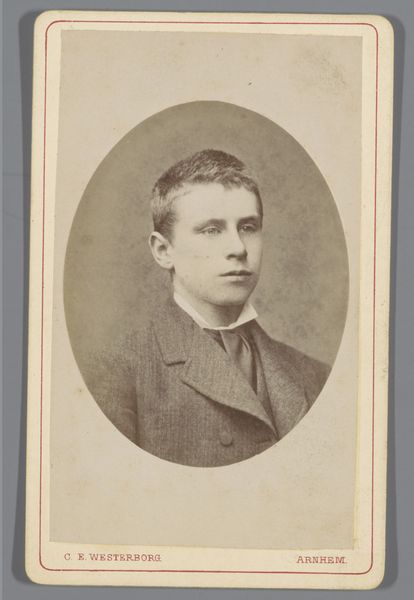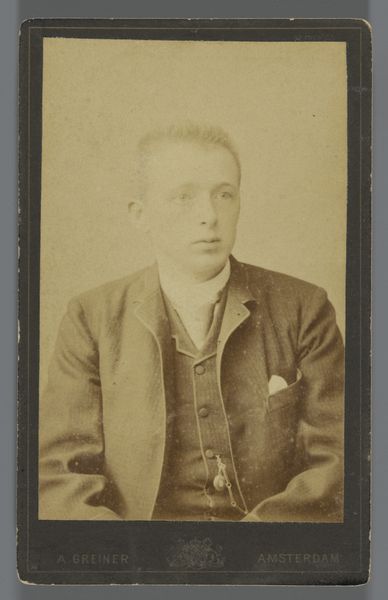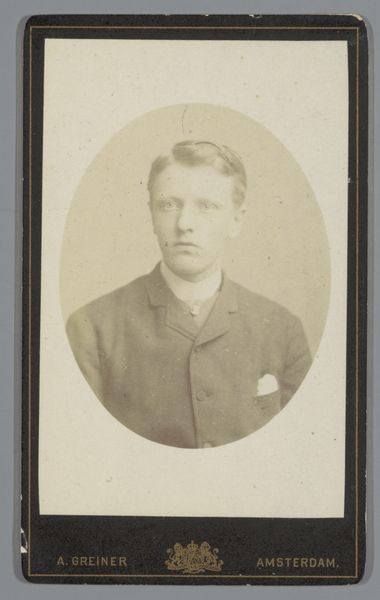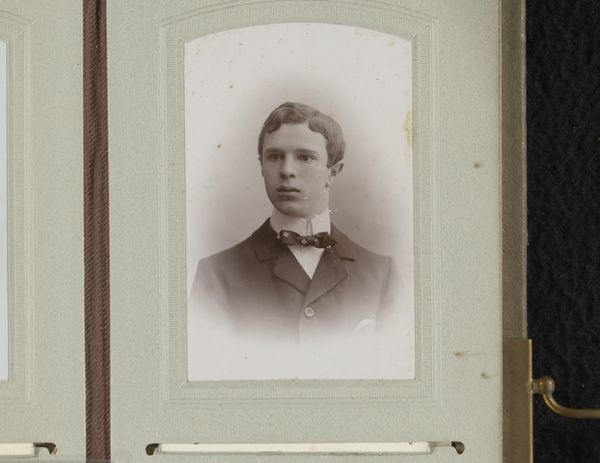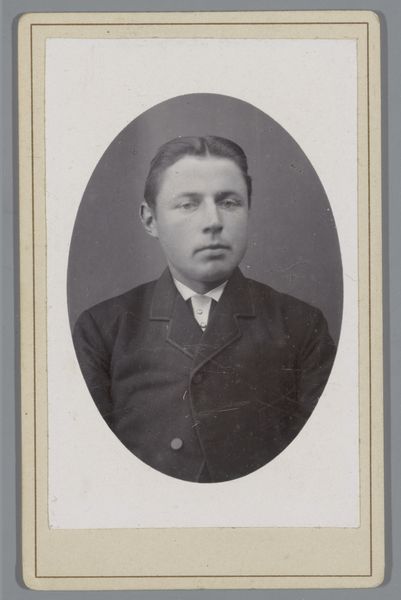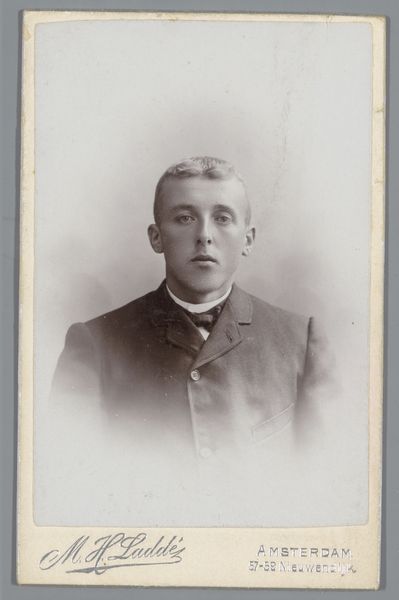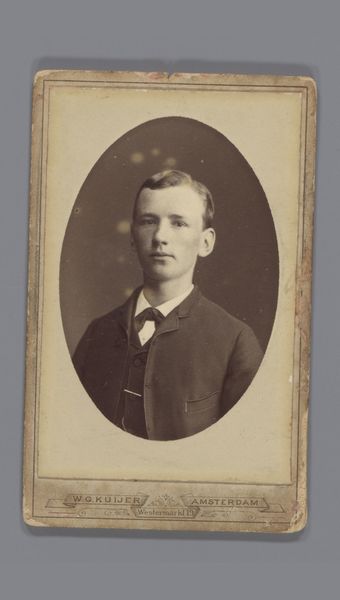
photography, gelatin-silver-print
#
portrait
#
photography
#
gelatin-silver-print
Dimensions: height 105 mm, width 65 mm
Copyright: Rijks Museum: Open Domain
Curator: This gelatin-silver print, simply titled "Portret van een onbekende man," produced sometime between 1878 and 1902 by Johan Christiaan Caron, is an interesting piece. What strikes you first about it? Editor: It has a somber tone, almost haunting, despite its straightforward composition. The way the light falls gives him a slightly melancholy air. You feel you can project different emotions and possible stories behind it. Curator: I agree, the image is compelling. Early photography held such weight. These portraits weren't casual snaps; they were carefully staged events. It begs the question: what symbols can we decipher? That cravat, for instance, speaks to aspirations, perhaps marking a coming of age. What stories was he trying to tell the world? Editor: Let’s also not overlook the labour involved in creating a photograph like this during the late 19th century. Each element—the precise mixing of chemicals, the light, the pose itself, plus the economic capital needed to go to a photographer studio on Tollensstraat. All signify a certain degree of… prestige and permanence in wanting to get it ‘right.’ It has an aura unlike any casual modern photo we might snap these days. Curator: Exactly. He isn’t looking directly at us, adding another layer of complexity. In portraits such as this one, the slight turn of the head suggests something deeper than mere surface representation. Maybe his gaze into the distance is alluding to an envisioned future? What else does his image remind us of? Editor: Well, for all its focus on the individual, a photograph like this, being mass-produced in terms of printing capabilities, allowed a wider distribution of images—sort of like a precursor to the modern selfie, perhaps—but one crafted with social ambitions and signifiers. It allowed those within a rising middle class to see themselves, quite literally, reflected back at them, within new networks. Curator: An interesting angle. I’d add that it is also worth noticing that the portrait's lasting power allows us to reflect on ideas of representation itself: not simply 'who' the sitter was, but who he hoped to be through this new visual language. Editor: Yes, a perfect encapsulation of artifice, capital, and a very careful mode of making all coming together into a new social symbolism of what it meant to see and be seen. Curator: Precisely, even in something that appears to be a straightforward studio shot. Editor: It reminds us that, sometimes, a single image can tell a more complex story.
Comments
No comments
Be the first to comment and join the conversation on the ultimate creative platform.
